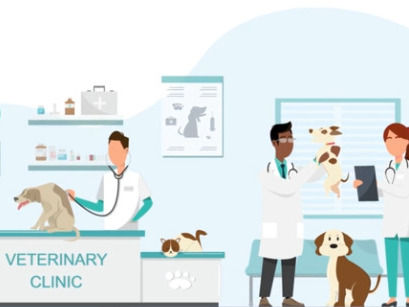Binocular Vision Discovery Provides Insights for Stem Cell Therapy
A Salk Institute research team has discovered how nature controls the degree of binocular vision in mammals, work that could have crucial implications for human stem-cell medicine.
Binocular vision is possible because some nerve cells (neurons) from the retina grow into the same side of the brain during embryonic development while others cross over into the opposite side of the brain. A research group at the Salk, led by Dr. Dennis O'Leary, has now discovered that the proportion of neurons that cross over is determined by a single regulatory protein called Islet-2. The startling results were published in the journal Cell today.
Binocular vision is essential to all predatory animals, including humans, because it provides us with depth perception. Prey animals, such as many birds, have sideways-projecting eyes and virtually no binocular vision.
O'Leary's group determined that Islet-2, a protein that turns on or off other genes that control the connections between nerve cells, has a very specific role in controlling the degree of binocular vision. It suppresses two key chemical signals called Zic2 and EphB1 that ensure retinal neurons grow ipsilaterally, that is, into the same side of the brain. In genetically engineered mice without the gene for Islet-2, Zic2 and EphB1 are able to exert their effects unchallenged and a greater percentage of retinal cells connect to the same side of the brain.
Thus, using this 'genetic reostat' nature appears to be able to 'dial up or down' the degree of binocular vision required in the developing animal simply by controlling the amount of Islet-2 produced by the retina.
Dr. O'Leary's fascinating discovery may have crucial implications for stem-cell medicine for repairing damaged nerves. "If you're going to use stem cells for therapy," O'Leary said, "you need to know what genes are involved in determining and restricting their fate."
Organizations
Other news from the department science

Get the life science industry in your inbox
By submitting this form you agree that LUMITOS AG will send you the newsletter(s) selected above by email. Your data will not be passed on to third parties. Your data will be stored and processed in accordance with our data protection regulations. LUMITOS may contact you by email for the purpose of advertising or market and opinion surveys. You can revoke your consent at any time without giving reasons to LUMITOS AG, Ernst-Augustin-Str. 2, 12489 Berlin, Germany or by e-mail at revoke@lumitos.com with effect for the future. In addition, each email contains a link to unsubscribe from the corresponding newsletter.
More news from our other portals
Last viewed contents
GlaxoSmithKline Laval facility becomes North America vaccine research and development headquarters - $50 million investment to support new role

Seeing DNA 'blink'
Evotec and venture capital consortium form "Breakpoint Therapeutics GmbH" - Early stage funding amounting to € 30 m



















































